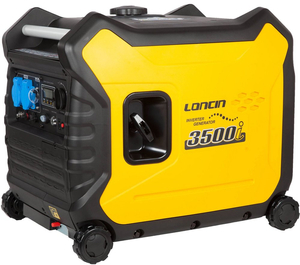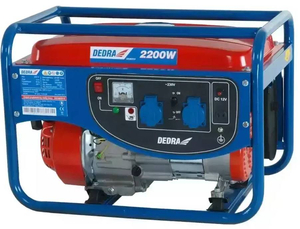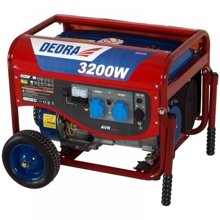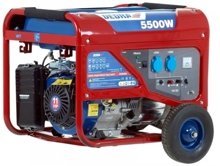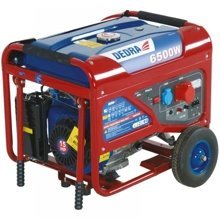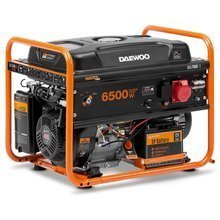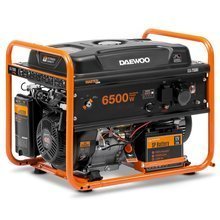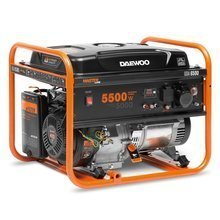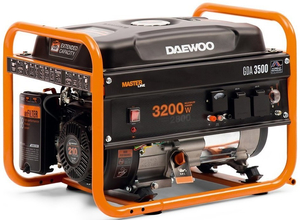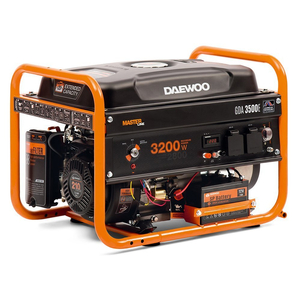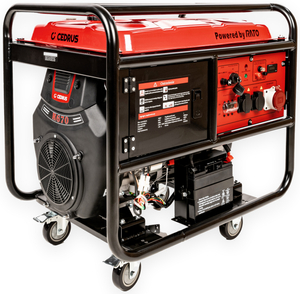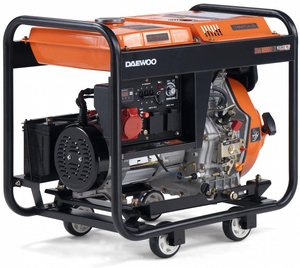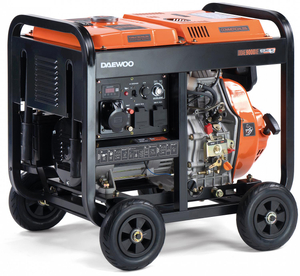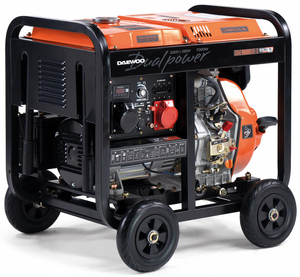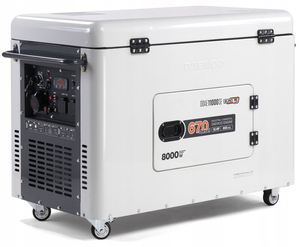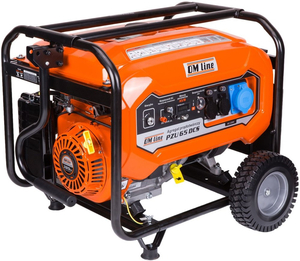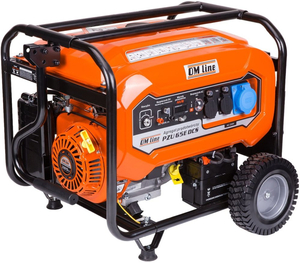Power generator generator for home - which power generator to choose?

How to choose a generator for your home? A generator will come in handy when there is no direct access to the electricity grid or there are power failures. Relatively inexpensive power generators will power electrical appliances in places where there is no way to connect to the power grid.
Generator set can come in handy for anyone - on a camping trip, recreational plot or in a garage where electricity is not supplied. Generator is useful in many situations. We will take it with us to the plot of land, where the power supply is not yet hooked up, so that we can use power tools and other electrical equipment. It will save us in case of an emergency and lack of energy supply. When the power suddenly goes out, we will connect lights, refrigerator, computer, alarm system and other necessary devices to the generator. A small generator, on the other hand, is a nice piece of camping equipment.
Generator set - what engine, what fuel
The wide range of generators includes:
- Gasoline generators with two-stroke and four-stroke engines. The latter are more efficient, but cost more.
- More economical are diesel generators - burn half as much fuel as gasoline engines.
- They burn the most liquid gas generators, that is, LPG, but for the time being it is a fairly cheap fuel, cheaper than gasoline and oil.
Generator for the home
For domestic use, the following are suitable power generators with small dimensions and correspondingly less power. In the case of equipment that generates AC electricity, the so-called apparent power is determined, the unit of which is the volt-ampere.
At a reasonable price (several thousand zloty) you can buy such generators with power from 0.5 to several kVA. Units up to 1.5 kVA are usually portable (may be in the form of a suitcase). Those with more power are already large and heavy, so they need to be transported on wheels - for this reason, they should be treated more like stationary devices.
Generator for construction time
For the time of the construction itself, a generator can be bought or rented and have electricity right away. The power of a genset is usually specified in kilovolt-amperes (kVA), which, in the case of equipment generating single-phase current, corresponds to the power expressed in kilowatts (kW). To determine the power in kilowatts for three-phase current (such power is often required for equipment on the construction site), you need to multiply the value given by the manufacturer (in kVA) by a reducing factor of 0.8. A new generator set is quite expensive, so if it is to be used only during construction, it is better to rent it from a construction machinery and equipment rental company or buy a used one that is several years old, as it will be much cheaper. It is also worthwhile in parallel to deal with the formalities and construction of the connection as soon as possible, since the use of a generator is not very convenient (you need to buy and store fuel - low-power generators consume 1 to 4 liters of diesel or gasoline per hour of operation), and the electricity it generates is about three times more expensive than mains electricity.
The price of renting a generator for one day ranges from 40 to 160 zlotys, not including fuel, of course. The deposit is 500-1200 zloty. Let's buy a generator when we intend to use it more often. Our house stands in an area where the electricity is turned off during storms or in winter, when windstorms or wet snow not infrequently knock out traction.
Remember! Generator set cannot stand unused for long. From time to time, for example, once a quarter, it is a good idea to "burn through" it, that is, run it for a short time.
Battery-powered power generators
Cheapest portable generators power the devices connected to them with energy previously stored in batteries. The obvious disadvantage of such a solution is its short-lived operation - they can provide power of several hundred watts (volt-amperes in the case of AC) for a dozen, at best, tens of minutes, after which they require several hours of recharging the batteries.
Diesel engine generator set
The relatively free use of electrical appliances is made possible by power generators powered by internal combustion engines (gasoline or diesel). A full fill of their fuel tanks is enough for several hours of operation, and the power depends on the size of the engine used - it can be any size, except that this translates into the price of the device. For less than 10,000. pLN you can buy generators with a capacity of several kilowatts.
Unlike battery-powered popular diesel generators not suitable for use indoors - they produce fumes, require air cooling and make a lot of noise. Therefore, they should be placed outside - preferably under a roof, in a place where the noise of the engine will not be a nuisance.
Suitcase power generators
Only small-powered travel generators (to take on camping trips, for example) have suitcase enclosures that are sound-insulated for easy transport. Their main applications are emergency power supply power tools and small electricity consumers, for example, on a camping trip. Due to their low power output, they are unlikely to be suitable for emergency power supply to a home electrical system.
Generator set - how many devices can be connected
Remember that the power of the generator should be greater than the total power of the devices that will be connected to it. In doing so, we take into account the maximum power, not the rated power, especially if they are to be equipment with induction motors that require more current to start (pumps, hydrophones). For power tools and construction equipment, the power of the generator should be about 1.2 times its output. So before connecting anything to a generator set, let's check its power output. It will be more difficult when the generator is to supply power to determine what is the total power of household electrical appliances. It should account for 70- 80% of the power of the aggregate. In practice, this is determined by adding 1.2 kW to the power consumption of each device and adding them up. The power of the generator must not be less, moreover, it should still have 20%-30% reserve. If the power consumption turns out to be too much for a given generator, it remains to disconnect some devices from the network. 60% of the power of the genset can have three-phase devices connected to it. It is also important to know that single-phase equipment can be connected to a three-phase generator with a capacity of about 6 kWA, but they will then manage to receive no more than 3.48 kW of power. In general, in the case of a three-phase generator, it is better not to use three-phase and single-phase equipment at the same time.
Generator set price
We already know the importance of the power and engine capacity of the aggregator. What else makes the unit more comfortable to use? It will certainly be an electronic starter, so that we start the machine by pressing a button, instead of tugging the rope. If our genset is to power electronic devices, it is worth it to have an electronic voltage stabilization (AVR) function. The delicate equipment will then not feel its jumps. AVR, on the other hand, is not necessary if the genset is to power power power tools or construction equipment. Smaller generators also have an output supplying 12-volt direct current (DC) - useful for charging batteries. When choosing a generator, you should also find out whether it has an exhaust catalytic converter and a noise suppression system. Let's also mention a small detail that gives great convenience. It's all about the wheels. Large generators are heavy and wheels become necessary to transport them from place to place on their own.
Generator set power
When choosing a generator, count on the fact that the higher the power, the more expensive the generator will be and the more fuel it will consume. The mid-range and mid-size generator will be a powerbank for our power tools when we need to use them away from a power source. They have two-stroke gasoline engines with 800-1000 watts of power. Contractor or renovation crews, but also more advanced do-it-yourselfers, may find a three-phase generator set (which produces a 400-volt take-home current - so-called power) useful. It can also operate devices on 230 V (it has plugs of both types). Such units should have a lot of power, especially if we are going to connect to them, for example, concrete mixers, but not as much as those described above. This is because they will not work with multiple equipment at once. The smallest are inverter units single-phase. Their power is 600-800 watts. It's worth keeping them on hand like a first aid kit. After all, you never know when it will come in handy. Such a "tourist" suitcase generator does not need to have a lot of power. What also counts is its compact design, light weight and ease of portability. It works well in camping conditions because it works the quietest of all. It is also useful on a yacht when the battery goes out and there is a supply of fuel for the engine.
Emergency power supply to the house - when the generator turns on
By generator acted as a real emergency power source, it should start up automatically when there is a power failure in the grid. Unfortunately, the cheapest generators do not have such a feature. They are equipped with manual starters (with a starter cord), which makes them not the best solution to the problem of sustaining power to equipment that needs to work continuously (pumps, alarm installations, computers, telecommunications equipment).
For this you need a fully automated unit with an electric starter permanently connected to the home electrical installation. And the prices of such devices start from several thousand zlotys.
A much cheaper way to maintain voltage after a power failure is to use an uninterruptible power supply (UPS), called UPS for short. These types of devices are connected to the electrical grid so that, in the event of an interruption or disruption in the supply of power, they supply it from built-in batteries. They are used most often to power stationary computers used for work, but can also be combined with other devices, such as circulating pumps in heating systems.
Generator and UPS - power without interruption
A way to ensure uninterrupted and long-lasting operation of electrical equipment during a power failure is to use an assembly that is a combination of an uninterruptible power supply and a generator. Power supplies equipped with the so-called AG circuit, which ensures less sensitivity to unstable frequency and disturbances of the sinusoidal current waveform, can cooperate with the genset.
The most popular and at the same time the cheapest (a few hundred zlotys for a 1 kVA unit) are off-line uninterruptible power supplies. They consist of a simple inverter, a voltage booster transformer, batteries, their charger and a control system.
When power is supplied from the grid, the attached UPS supplies the loads directly from the grid (passive filters) and at the same time, if necessary, recharges its own batteries through a rectifier. In the event of a power outage or excessive change in voltage, the control system disconnects power from the grid and starts supplying power from the batteries, while the inverter changes DC voltage to AC voltage. An interruption in the supply of energy to the powered devices lasts only 2-10 ms, so it should not cause interference in their operation - the inverter is phase-synchronized with the power grid.
Off-line power supplies are sometimes also labeled Line-interactive and Line-interactive AVR (with an autotransformer instead of a classic transformer). In on-line power supplies, the voltage from the mains is converted to DC in a rectifier circuit and then changed again to AC by an inverter. Thanks to this, the voltage at the output is stable and not subject to disturbances, even in the event of a power outage (the inverter is constantly connected to the batteries, so there is no interruption in the supply of energy).
Online devices are more expensive than offline ones due to their more complex design. In addition, their operation involves noticeable energy losses. They are not likely to be used for domestic applications, but only for interfacing with interference-sensitive equipment, such as components of data communications systems with considerable power. They require effective cooling and are noisy. The power of the cheapest uninterruptible power supplies is 250 VA, and the largest reach several kVA. The biggest disadvantage of cheap devices of this type is the short battery life - only a few minutes. Using a larger battery of rechargeable batteries can extend it to several hours, but makes the device much more expensive.
How to choose the right power supply?
The most important thing is the power rating of the genset or power supply, which must be adapted to the actual load. During normal operation of the receiver, the load should not exceed 80% of the rated power of the power supply equipment. Some power consumers (for example power tools with electric motors) draw much more during startup than during normal operation, which also has to be taken into account. Good quality gensets and UPSs can be overloaded by several tens of percent for short periods of time - we should find this information on the nameplate.
Single-phase generators
Power: 1.8 kW (rated), 2.2 kW (maximum); voltage: 230 V/ 400 V; engine: gasoline; capacity: 121 cm3; starter: manual; fuel tank capacity: 3.6 l; operating time after one refueling: 3 h 50 min (in Economy Mode even 7-8 h); number of sockets: 2 x 230V 16 A, one 12V - 8,3A (DC); noise level: 90 dB; weight: 21.1 kg.Additional advantages include a direct current (DC) socket for charging car-type batteries. The following are located on the front panel: oil sensor indicator light, overload warning light, power control light, AC circuit fuses, DC circuit fuse, ECO mode switch, sockets for parallel connection of two generators, ground terminal. The EU 22i features a new solution - a fuel valve, which makes it easier for users to properly operate the unit by burning off the fuel completely. Options include: hour meter, battery charging cable, auto sync cable, protective case.
Basic principles of using generators
- Correct selection of the genset and proper connection of loads - the basic rule is to determine the active power of the genset, which should be greater than the summed power of the loads that will be connected to it simultaneously and increased by the value of the power needed when starting the loads.
- Familiarize yourself with the instruction manual for the model in question, which contains information m.in. on the operation of the device, maintenance and recommended frequency of technical inspections.
- Checking the positioning of the genset before start-up - this mainly applies to portable gensets, used in different locations. In such cases, make sure that the device stands on a flat, level surface.
- Checking the oil level - before each start of the unit. If necessary, refill the tank to the top of the filler neck.
- Fuel level control - the amount of fuel must not be below the minimum level. Thoroughly tighten the fuel filler cap after each refill. It is also worth remembering not to leave the fuel in the tank, because if it is left for more than a month, it loses its properties, and a deposit is formed in the tank, which then goes to the carburetor and clogs its nozzles. Nozzles, on the other hand, are sensitive to the smallest particles of sediment and, clogged, prevent the engine from starting. If you suspect clogged carburetor nozzles, it is essential to bring the machine to an authorized service center.
- Checking the air filter - it should be systematically cleaned and replaced at least once a year. Clogged, it restricts the supply of clean air that the engine needs for proper operation.
The consequences of not getting enough clean air into the engine are very serious. Generally speaking, this lowers its power, degrades performance and increases fuel consumption. Add here the above-normal emissions leaking into the environment, higher operating costs and much louder engine operation. I would also like to emphasize very strongly that an internal combustion engine cannot operate without a dedicated air filter, otherwise the engine will end up, sooner rather than later, in service. - explains Wojciech Zawada, Manager of the Spare Parts and Accessories Department at Aries Power Equipment, which is the General Distributor of Honda machinery and equipment in Poland. - A defective air filter lets dust and sludge contaminate the carburetor, leading to excessive and rapid wear of the engine's cylinders, pistons and rings. A worn or damaged air filter reduces engine power, degrades machine performance and increases fuel consumption. It also affects the environment, since the effect of its poor condition is above-normal emissions, check the condition of receivers - before connecting receivers to the genset, check that they are in working order.
Recommended
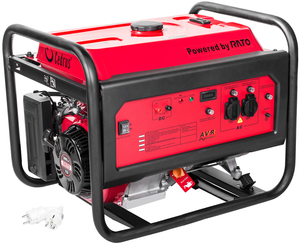
CEDRUS AG3-1F GENERATOR GENERATOR 3 KW 3000W
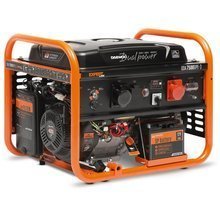
DAEWOO GDA 7500DPE-3 DUAL POWER GENERATOR DAEWOO GDA 7500DPE-3 DUAL POWER STARTER , 1x32A, 1x16A 380V AVR 6.5kW - OFFICIAL DAEWOO DISTRIBUTOR
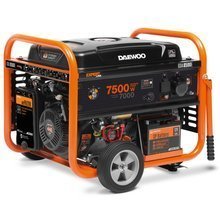
DAEWOO GDA 8500E GENERATE GENERATOR WITH INTRODUCTOR 1x16A, 1x32A AVR POWER OF 7,5kW - OFFICIAL DISTRIBUTOR - AUTHORIZED DAEWOO DEALER
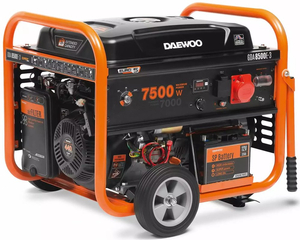
DAEWOO GDA 8500E-3 GENERATE GENERATOR WITH STARTER 1x16A 230V, 1x16A 380V AVR POWER 7.5kW - OFFICIAL DISTRIBUTOR - AUTHORIZED DAEWOO DEALER
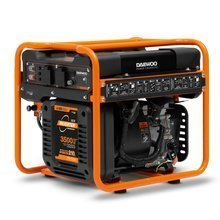
DAEWOO GDA 4600i INVERTOR GENERATOR 2x16A 3.5kW - OFFICIAL DISTRIBUTOR - AUTHORIZED DAEWOO DEALER
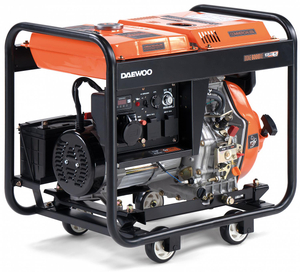
DAEWOO DDAE 6000XE DIESEL POWER GENERATOR 2x16A, 1x32A AVR 11HP POWER - OFFICIAL DISTRIBUTOR - DAEWOO AUTHORIZED DEALER
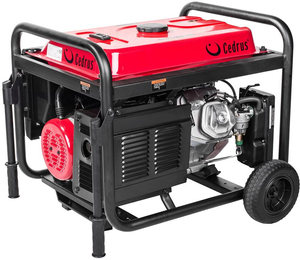
CEDRUS AG7E-3F RATO GENERATOR 16HP 6.8 kW 6800W 230V/400V - EWIMAX - OFFICIAL DISTRIBUTOR - AUTHORIZED DEALER CEDRUS
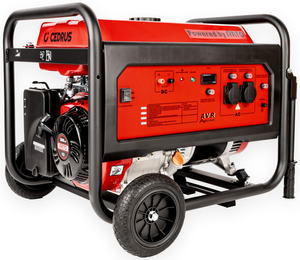
CEDRUS AG5 GENERATOR 5.5 KW 5500W 230V AG5-1F - EWIMAX - OFFICIAL DISTRIBUTOR - AUTHORIZED CEDRUS DEALER
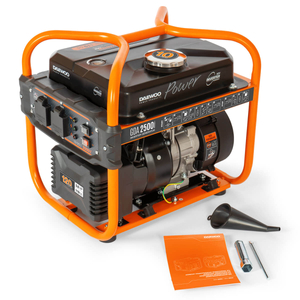
DAEWOO GDA 2500i INVERTOR GENERATOR 2x16A 2 kW POWER - OFFICIAL DISTRIBUTOR - DAEWOO AUTHORIZED DEALER
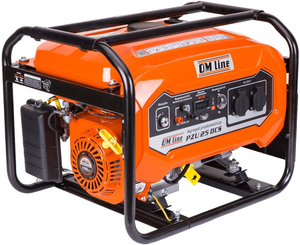
OLEO MAC OM LINE PZU 25 DCS AC GENERATOR 230V with AVR 2,2 KW- OFFICIAL DISTRIBUTOR - AUTHORIZED DEALER OLEO MAC
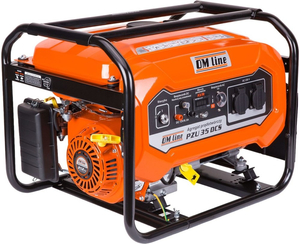
OLEO MAC OM LINE PZU 35 DCS AC GENERATOR 230V with AVR 3,1 KW - OFFICIAL DISTRIBUTOR - AUTHORIZED DEALER OLEO MAC
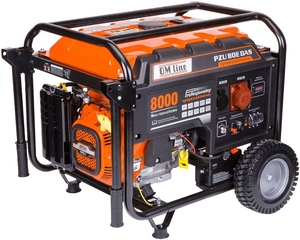
OLEO MAC OM LINE PZU 80E DAS AC GENERATOR 230V 400V with AVR ESTART STARTER 6,5 KW - OFFICIAL DISTRIBUTOR - AUTHORIZED DEALER OLEO MAC
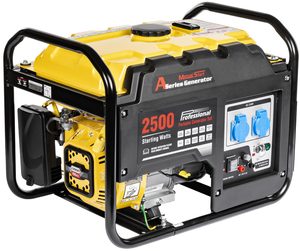
LONCIN LC2500-AS POWERFUL GENERATOR 2x230V AVR 2,2kW - EWIMAX OFFICIAL DISTRIBUTOR - AUTHORIZED LONCIN DEALER
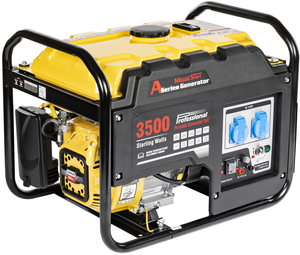
LONCIN LC3500-AS POWERFUL GENERATOR 2x230V AVR 3,1kW - EWIMAX OFFICIAL DISTRIBUTOR - AUTHORIZED LONCIN DEALER
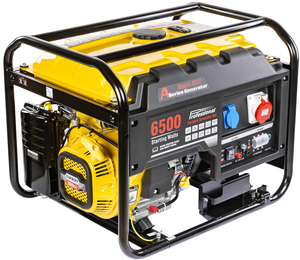
LONCIN LC6500D-AS POWERFUL 230V / 400V AVR 5.5kW GENERATOR - EWIMAX OFFICIAL DISTRIBUTOR - AUTHORIZED LONCIN DEALER
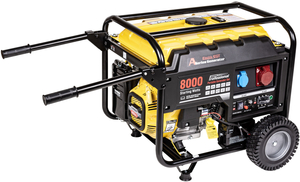
LONCIN LC8000D-AS POWERFUL 230V / 400V AVR 6.5kW GENERATOR - EWIMAX OFFICIAL DISTRIBUTOR - AUTHORIZED LONCIN DEALER
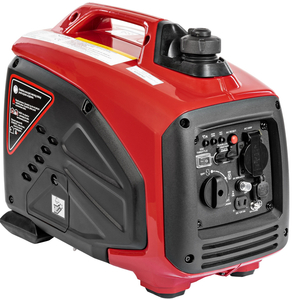
CEDRUS IN1000R GENERATOR INVERTER GENERATOR 230V INVERTER CASE 1000W EWIMAX - OFFICIAL DISTRIBUTOR - AUTHORIZED CEDRUS DEALER
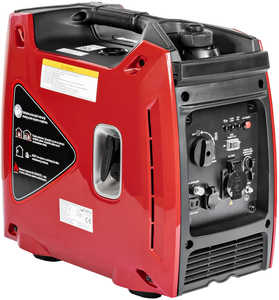
CEDRUS IN2000R INVERTER GENERATOR INVERTER GENERATOR CASE 230V 1900W EWIMAX - OFFICIAL DISTRIBUTOR - AUTHORIZED CEDRUS DEALER
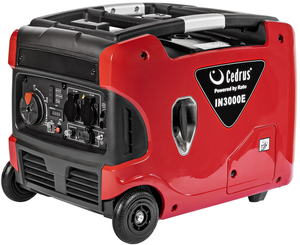
CEDRUS IN3000E GENERATOR INVERTER GENERATOR CASE 230V 3.3 KW ESTART - STARTER EWIMAX - OFFICIAL DISTRIBUTOR - AUTHORIZED CEDRUS DEALER
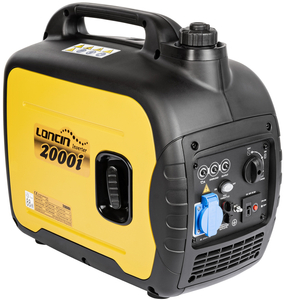
LONCIN LC2000I GENERATOR INVERTER GENERATOR CASE INVERTER GENERATOR 230V 1.8 KW EWIMAX - OFFICIAL DISTRIBUTOR - AUTHORIZED CEDRUS DEALER
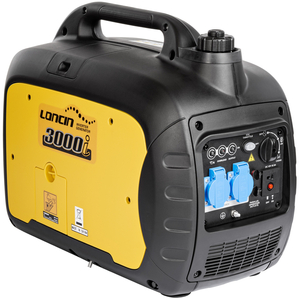
LONCIN LC3000I GENERATOR INVERTER GENERATOR CASE 230V 2.5 KW EWIMAX - OFFICIAL DISTRIBUTOR - AUTHORIZED CEDRUS DEALER
